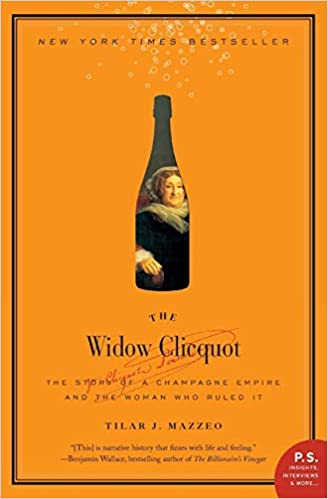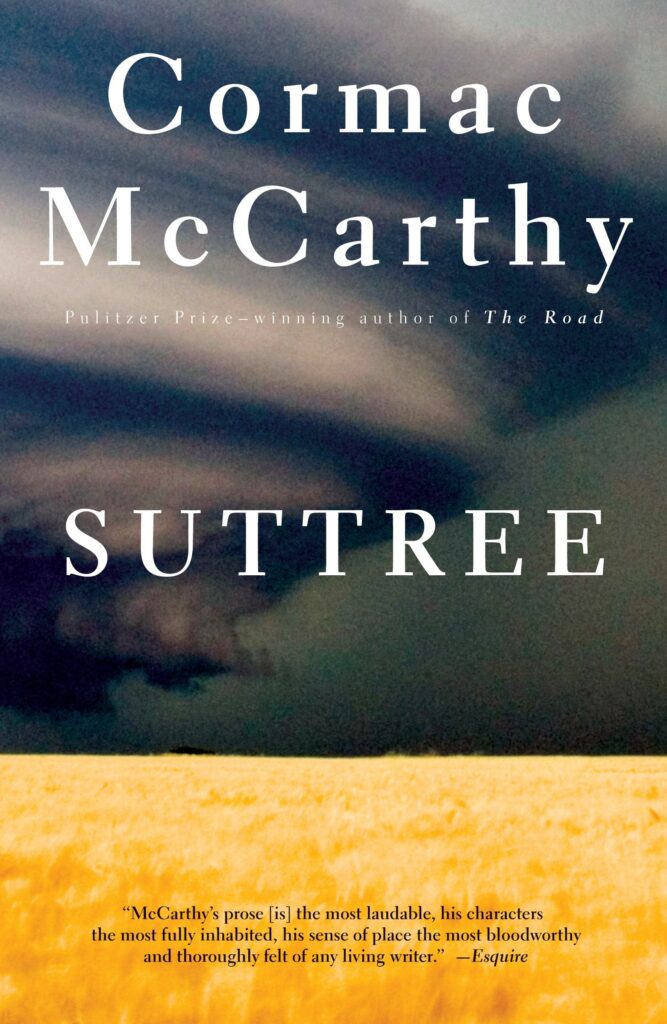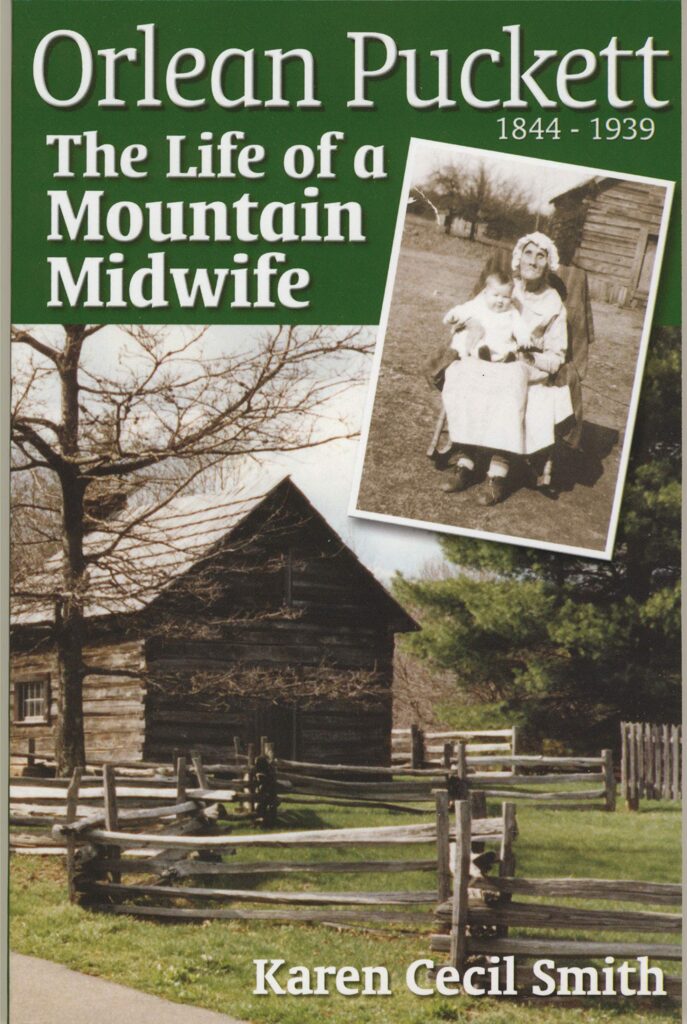I’m catching up on some recent reading…
Tilar J. Mazzero, The Widow Clicquot: The Story of a Champagne Empire and the Woman Who Ruled It.
(Harpers Business, 2009), 264 pages.

Late last year, I listened to the author’s “Great Courses” lectures on “Creative Nonfiction.” She often used examples of her own writing including this book. I was curious as to how she took what little personal knowledge is available about Clicquot and turn it into a book that remained “true” to the available facts. Mazzero uses a lot of qualifying words to suggest what her subject might have done or said. While this sometimes became annoying, I enjoyed the book. And I don’t particularly like champagne!
The Widow Clicquot (Barbe-Nicole Ponsardin) was born into a wealthy French industrial family. He father had created a textile empire. At boarding school when the French revolutionary began, a family seamstress risked her life to rescue the young woman. Afterwards, during a time when the Catholic Church in France was frowned upon, she was married in a secret wedding to the son of another wealthy French industrialist. The marriage had benefits both, as both families were primarily involved in textiles. However, as was common among those whose fortunes were rising in France, they also had wineries. Her husband, Franciois Clicquot, decided that he would make his fortune in the champagne. During this period, champagne was just coming into its own and gaining popularity in England and in Russia.
When she was 27, she found herself widowed with a child. She would never remarry. For years, she struggled to build the dream she and her husband held for their champagne business. At first, it seemed that every year created another setback. Sometimes it was the weather, other times it was global politics. Napoleon’s warmongering meant that France’s ports were often blockaded. Russia had been a hot market for champagne until Napoleon invaded. This led to an interesting story as one of her agents who were procuring orders barely escaped Russia with his life as he was seen possible spy.
After years of setback, champagne became more popular after the Napoleonic wars. As foreign forces pushed Napoleon back, they occupied the champagne region and fell in love with the drink. Then she creates the “riddling table”, a new way to produce champagne, which took out some of the guess work and allowed for more streamlined production. She had racks built that held the cork opening down. The bottles were turned, drawing the dead yeast toward the opening, where they could be discarded and the bottled topped off with fresh champagne. This secret allowed her company to outproduce the other wineries producing champagne. Her wealth continued to grow. By the middle of the 19th Century, her bottles of champagne became known as “the Widow,” a reference that is often found in 19th Century literature, when characters order champagne.
I learned much from this book. Not only does the reader learn about with widow and her company, but also the history of champagne. Mazzero debunks the popular story that it was Dom Perignon who popularized the drink as “drinking the stars.” The book tells the story of the risks Barbe-Nicole and her business partners took to build their empire. Insight into 19th Century trade, along with the development of trademarks and marking augment Barbe-Nichole’s story. However, due to the limited about of personal resources, many of Mazzero’s insights into Barbe-Nicole’s life is by inference and cannot be factually proven.
###
Cormac McCarthy, Suttree
(1979). Audible 20 hours and 22 minutes.

I had a love/hate relationship with this book which I listened to on Audible. There isn’t really a plot, unless the plot is that everyone dies. But that’s not exactly true, just many of the secondary characters die.
However, the writing is mostly beautiful, with a few gross or raunchy scenes. McCarthy is a master storyteller and his descriptions brings places and people alive. This novel is a collection of vignettes from Sutrree’s life. Through his eyes we learn what life was like on skid row in Knoxville, Tennessee in the early 1950s.
Suttree lives on a dilapidated houseboat and makes a meager living by fishing for catfish in the river. But there is something that separates Suttree from the rest of those who are down on their luck. For one, we catch a glimpse of his past. Through the story told, we learn he attended a Catholic school and latter college. He had also once been married and had a child. But for some reason he walks away from it all. He seems to enjoy the life down by the riverfront, even though he does get away at times and into the mountains.
Those down and out in Knoxville look to Suttree for advice. Suttree takes on the role as their protector, as he tries to steer people the right way. His advice is generally good, such as discouraging Gene Harrogate from attempting to break out from the workhouse (a chain gang prison farm), telling him if he did, he’d be caught and would spend the rest of his life in and out of prison. He befriends all: prostitutes, blacks, homosexuals, alcoholics, and drug addicts.
While many of the characters are short-lived in their encounters with Suttree, Gene Harrogate keeps reappearing throughout the book. Even at the end, we learn he’s in prison for three to five years. Harrogate and Suttree first meets in the workhouse. We don’t really learn what Suttree did, but Harrogate is there for copulating with many watermelons, ruining a farmer’s crop. He’s always trying to find a way to “make it.” When the health department puts out a call for any found dead bats in town, promising a dollar a bat to check for rabies, Harrogate masters a way to wipe out a bat colony. However, once they learn the bats died by other means, they don’t pay him for the bats. Learning of the tunnels through the city, he concocts a plan to blow up the city’s vault. While much of Knoxville believe they’ve experienced a small earthquake, Suttree knows better and goes underground to find a wounded and stunned Hargrove stinking from the sewer lines that ruptured in his failed attempt to blow the vault.
Suttree has two “romantic” encounters in the book. One is with a teenager daughter to his “freshwater mussel” partner. The mussel shells are sold to be manufactured into buttons (something I recently learned from the writings of Alice Outwater is a reason for the decline of freshwater mussels). She dies in a rockslide. The next is a prostitute. The two of them live it up for a short while, but then she has a breakdown and leaves.
One of the more interesting vignettes is of Suttree and a black friend visiting an old Geechee witch. She puts him under a spell which creates a horrific vision. He has a similar horrific vision toward the end of the book when he has typhoid fever. I was expecting he was going to die, supporting the plot idea that “everyone dies.” However, he recovers and leaves town. Hargrove, at the time, is in prison.
Warning, if you read this book, there are rough spots, which one should expect when writing about those living on the margin of society. McCarthy shows that he can master the grotesque as well as Flannery O’Conner.
###
Julie Salamon, Ramban’s Ladder: A Meditation on Generosity and Why It Is Necessary to Give
(New York: Worksman Publishing, 2003), 183 pages.

Maimonides, a Jewish philosopher and physician during the Middle Ages, also known as Rambam, created a ladder of charity. Each of the eight rungs on the ladder represented a step toward more compassionate response to those in need. The bottom rung is the one who gives reluctantly and in a begrudging manner. Next would be the person who gives just a little, not enough, but in a friendly manner. Then there is one who gives when asked, then before being asked, then giving without knowing who the gift is for, then giving anonymously, then giving whether neither the one in need nor the giver knows one another. The highest run on the ladder is the one who helps lift the needy out of poverty by helping them start a business, giving them a job, or going in partnership with them.
Salamon, in this book, goes through each step. With numerous examples, many from her own life (such as avoiding beggars along the New York Streets, then befriending one…), she illustrates each step.
I recommend this book for those interested in becoming more generous. It would be an especially helpful book for someone speaking about generosity as she provides so many stories for illustration.
###
Karen Cecil Smith, Orlean Puckett, 1844-1939: The Life of a Mountain Midwife
(Boone, NC: Parkway Publishing, 2003), 166 pages.

As I’ve been doing since I moved here last October, this another book that I read in my attempts to learn this new area I find myself ministering. A little over a mile north of Bluemont Presbyterian Church, along the Blueridge Parkway, there is a cabin with a historical marker about a famous midwife in these parks, Orlean Puckett. However, the cabin belonged her sister-in-law, Betty Puckett. Orlean’s larger home was torn down after the Park Service refused to allow her to live in it until her death. She died shortly after having to move and the parkway was open for traffic through southwest Virginia.
There is a lot that is not known about Orlean. Even her birthyear is in question (some records said 1839). Before the Civil War, she married John Puckett. He would serve in the Confederate Army, but like many, he deserted and lived in the Virginia mountains for the rest of the war. There seems to be some question as if the two of them got along or if there was abuse. He did drink a lot, but Smith makes the case that two loved each other. Orlean had 24 babies. All but one died either in womb or shortly after birth. The one surviving, her firstborn, lived a few years. It is now thought she suffered from Rh Hemolytic disease, which was unknown at the time. While some may have thought the children died from mistreatment, it seems unlikely many felt that way since so many women on the mountain would employ her as a midwife.
After taking on the role of midwife, for 49 years helped deliver over a thousand children. She would travel by foot or horse, all over the mountains, in all kinds of weather. She served as a midwife until just before she died.
Smith overcomes the lack of direct knowledge about much of Orlean’s life by providing a background into mountain ways of life, the history of midwifery, and the development of the Blue Ridge Parkway. There are also interesting tidbits of folklore used by midwives. At times, the story seems a bit disjointed, but I found it interesting. The book draws heavily on oral interviews, of which Smith quotes from extensively.
###

Many thanks for your thoughts on these books.
The one that caught my eye was your last one about the mountain midwife,
All the best Jan
The Widow Clicquot is on my TBR shelves! In fact, it’s on the top shelf which means I might even get to it soon. I’m pretty sure that was the book that inspired my wife to declare that she wants to become a champagne riddler when she grows up.
Thank you for the reviews, I always enjoy reading your thoughts, it’s nearly (almost) as reading it myself. Your descriptions and thoughts are so welcomed. I am a huge non-fiction reader, and the class on Creative Non-fiction is just perfect! On the daily side, I hope your spring is better than our back and forth to winter, just getting old, and that your city is being Covid safe! I’m hoping and praying we can all get vaccinated and headed in the right direction. Take care, enjoy your week.
Great selection of books! Thanks for the reviews
Like a previous commentator I didn’t enjoy McCarthy’s The Road, but he is an interesting writer
A few interesting books there.
Interesting batch of books! I also have a love/hate relationship with Cormac McCarthy’s work. He writes about intriguing topics, but I usually find his stuff bleak and boring.
I’m really interested in the Cormac McCarthy book. Although you could almost say I was traumatized by The Road. Absolute great novel but I find I can’t handle suffering in either books or movies these days.
While there is plenty of suffering in Suttree, it’s nothing like the Road, which is both a great book and a troubling one.
I love your book reviews and you always make me want to read any book you mention. However, sine I had a small stroke after my open-heart surgery, I have trouble concentrating. The stack of 13 books I have yet to read attests to my current reticence to reading. That, plus the fact that I seldom get 10 minutes in a stretch without interruption makes it all harder. Perhaps someday I will get around to your suggestions.
I hope you’re able to gain by your concentration, Judy, and pick up reading again. I always have several books going–two or three are print and one is audible.
Sage
Loved your reviews, especially mountain midwife, like to read that myself!
Sage
I am working thru a travel Logue by Paul Theroux (author of Mosquito Coast).
It reminds me of your Sabbatical tour. The name of the book is “Ghost Train to the Eastern Star ”
timm
That’s a great book. I read both it and his first book of a similar trip (The Great Railway Bizarre”) before planning that trip!
Did you have many similar observations?
T
Yes and no. I like Theroux’s writing, but I don’t think I would like to travel with him. However, I find is interest in being with people who are native to the area and to listen to them is refreshing. I would recommend his book, “Dark Star Safari” in which he travels from Cairo to Cape Town–lots of interesting insight into mission work!
I’d lend it to you, Timm, but the copy I read was lent to me. This is a neat area with lots of history.
Sage
I will put “Dark Star Safari” on my reading list. Thanks
I could not imagine listening to a book by McCarthy. I don’t do audible books anyway, and don’t think that would be the one to start with. I’m a fan, though, and this is one I haven’t read. I’ve found I have to be in the right frame of mind to read anything of his. Good reviews as always.
I have both read and listened to “The Road.” He is an intense writer. This one isn’t nearly as dark as “The Road,” and there are some humorous parts in the book, too.
As someone who loves a glass of Veuve, I enjoyed your summary of The Widow Clicquot. We toured Korbel years ago, which featured a museum of champagne items like Riddlers. Interesting that people ordered the bottle with the term, ‘the widow.’
I couldn’t read The Road, so I would pass on any of Carmac’s books.
As I mentioned to others, this book isn’t nearly as “dark” as “The Road.” I am not a big wine drinker (I’ll take a whisky or a beer), but I was curious with how she wrote creatively about a woman whom little is known of her personal life.
The latter two books both sound fascinating to me.
I think you might enjoy them both!
I’ve read a number of books lately where the author deviates from the main story to spend chapters talking about the history of loosely related things or people. If the write is decent and good at story telling, I follow along but sometimes when reading all these side journeys becomes tedious, I just skip them. For example, I just finished a book on the CIA’s alliance with Howard Hughes to build a ship capable of retrieving a Soviet submarine from 16,000+ feet under the sea. The author kept breaking out chapters on the history of the submarine or a side characters early life that really had no relevance in the retrieval of the submarine. It feels like they are padding the book to get paid more… and perhaps there is truth to that.
Ed, Mazzeo is a very skilled author and I never felt she just ran off on a rabbit trail while she added lots of information about champagne making and the economic changes in the early 19th century. Smith has a lot of good information. Actually, I felt she relied too much on quotes from oral histories, and didn’t have the horned talent of Mazzeo. What’s the name of the book about Hughes and the submarine? That sounds like a book my daughter would enjoy.